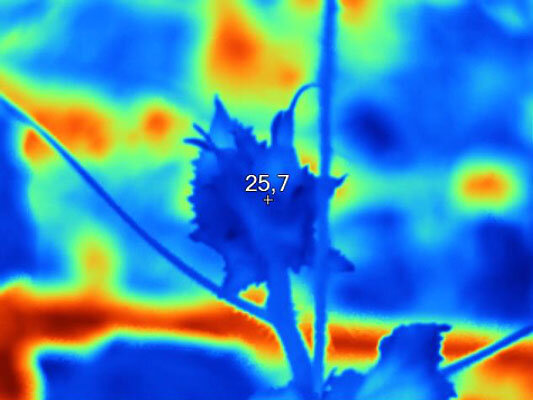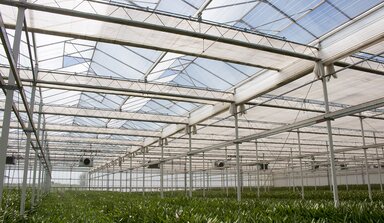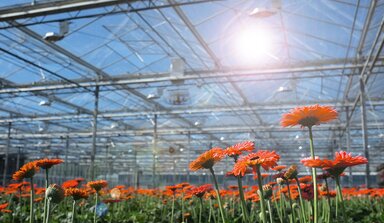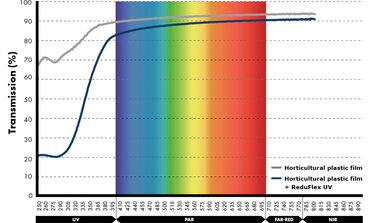Climate control based on plant temperature is getting closer
Plant temperature can differ from the greenhouse air temperature by several degrees. This is why controlling climate based on plant temperature is a good idea.
In most greenhouses, the data of the sensor box (temperature and humidity) are leading for climate control. Climate control is designed to create the most favourable conditions for the crop. However, the greenhouse air temperature and the plant temperature have their own dynamics.
At high radiation, the plant heats up, subsequently heating up the greenhouse air. Plant temperature is therefore higher than air temperature. During cloudy weather, the heating pipe first heats up the greenhouse air, which raises the plant temperature. This means the plant temperature is below the greenhouse temperature. There is a time delay effect, with differences running up to several degrees.
Increasing differences
The differences increase under specific conditions. If the plant is insufficiently able to cool down by evaporation, the plant temperature will show a significant difference with the greenhouse temperature. This is a result of very high radiation, combined with low humidity rate (and eventually insufficient water supply). The plant closes its skin pores to prevent dehydration. As a result, the temperature can rise quickly, causing heat stress.
Heat emission
Another situation where we see significant differences between greenhouse and plant temperatures is when the plant emits a lot of heat. This can cool down the top of the crop in a fairly short time, while the sensor data insufficiently indicates the need for changes to the climate.
The heat emission monitor of Wageningen University & Research is a useful instrument for gaining insight into the vertical temperature differential in the crop and evaporation in each crop layer. Please find the monitor at: www.glastuinbouwmodellen.wur.nl/radiationmonitor/.
Click here for temperatures in Fahrenheit.
The ReduSystems coatings have virtually no affect on the heat emission levels. This is why these were not included in the monitor.

Infrared camera
It is common knowledge that the crop will have extensive heat emission in cold nights with clear skies. This is why the energy screens are closed on such nights. However, growers using infrared cameras to monitor crop temperatures also note that also, for example, a sudden rain shower during the day can also lead to a significant decrease in head temperature. In those cases it would make sense to close the energy screen for a short time, with the aim of keeping the head temperature and therefore crop activity at a stable level.
An increasing number of companies use infrared cameras to gain more insight into the development of the plant temperature. Basically, the temperature of the growing tip is the most important. This is the most sensitive and where temperature is the key factor in growth speed. However, monitoring the precise growing tip is challenging. A camera monitoring the tips of the crop, also clearly indicates the developments.
Coatings
Diffuse coatings create a milder and more even greenhouse climate and would be a solution to the first situation: high radiation and closed skin pores. Diffused light distribution prevents any light spots that would make the plant temperature run up too high. This ensures that the crop remains active much longer.


